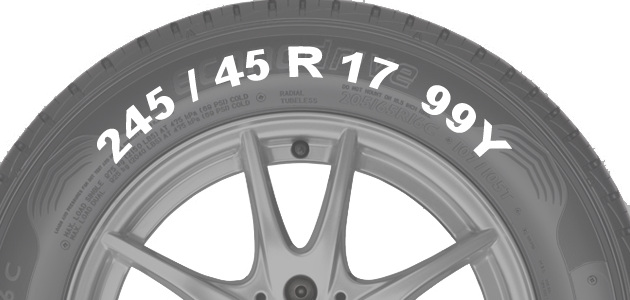A tyre’s sidewall has a plethora of information listed. This article will illustrate how to decipher the majority of the information listed on the sidewall. This article will also show how to convert the more common metric sizing method into inches for overall height, width and sidewall height. Besides tyre sizing, there are many safety related markings on a tyre’s sidewall that will be covered. Cheap tyres can be found online by visiting Europe´s biggest online retailer – eiretyres.com.
Reading Tyre Size on the Sidewall
The size can always be found on both sides of the tyre sidewall. Using the correct size for the vehicle is important for safety, fuel economy and ride characteristics. Under most circumstances the tyre size should be the same for all four wheels. Tyres should always be the same size on the same axle. The correct tyre size for the vehicle can also be found on a tag on the inside door jam of the vehicle,

For illustration purposes, the following tyre size will be used to demonstrate tyre type, size, speed and load range. The tyre size listed below is how it would appear on a tyres sidewall.
P205/60R16 98S
- P stands for a passenger rated tyre, T would be temporary spare and LT would indicate light truck.
- 205 stands for the road surface width in millimeters
- 60 indicates the aspect ratio for the sidewall height to the width. In this example the sidewall height would be 123 millimeters (60% of 205)
- R stands for radial
- 16 indicates the wheel size or inside diameter of the tyre in inches
- 98 indicates the load index, LT load ranges would be an alpha designation like C D or E.
- S indicates the speed rating
Calculating Tyre Height and Diameter in Inches
To convert millimeters to inches simply multiply times .03937. In the above example size, the sidewall height in inches would be 4.84 inches (123 X .03937). To get the overall height or diameter of the tyre double the side wall height and add the wheel size. This method of calculation can be used for tyre plus sizing to get the same height of the original tyres.
4.84 + 4.84 + 16.00 = 25.68 or approximately 25 5/8 of an inch
Reading DOT Quality Codes on the Tyre Sidewall
The U.S. Government developed a Uniformed Tyre Quality Grading (UTQG) system that is printed on the sidewall. This grading system shows the uniformed tests of three safety categories. These safety scores can be found on the tyre’s sidewall.
- Treadwear
- Traction
- Temperature
Treadwear grade shows treadwear life. The grades are generally graded from 60 to 800, with 800 being the best.
Traction is based on the tyre’s ability to stop in a straight line, on wet pavement with a locked wheel. Tyre traction grades range from AA to C with AA being the best.
Temperature grade shows the tyre’s ability to dissipate heat. Temperature grades range from A to C with A being the best.
There are also sidewall markings for mud and snow tyres, usually marked with M & S. Snow tyres that are rated for severe weather winter conditions have a special marking. Tyre sidewall markings can help the car owner choose the right car or truck tyre for their vehicle application.



